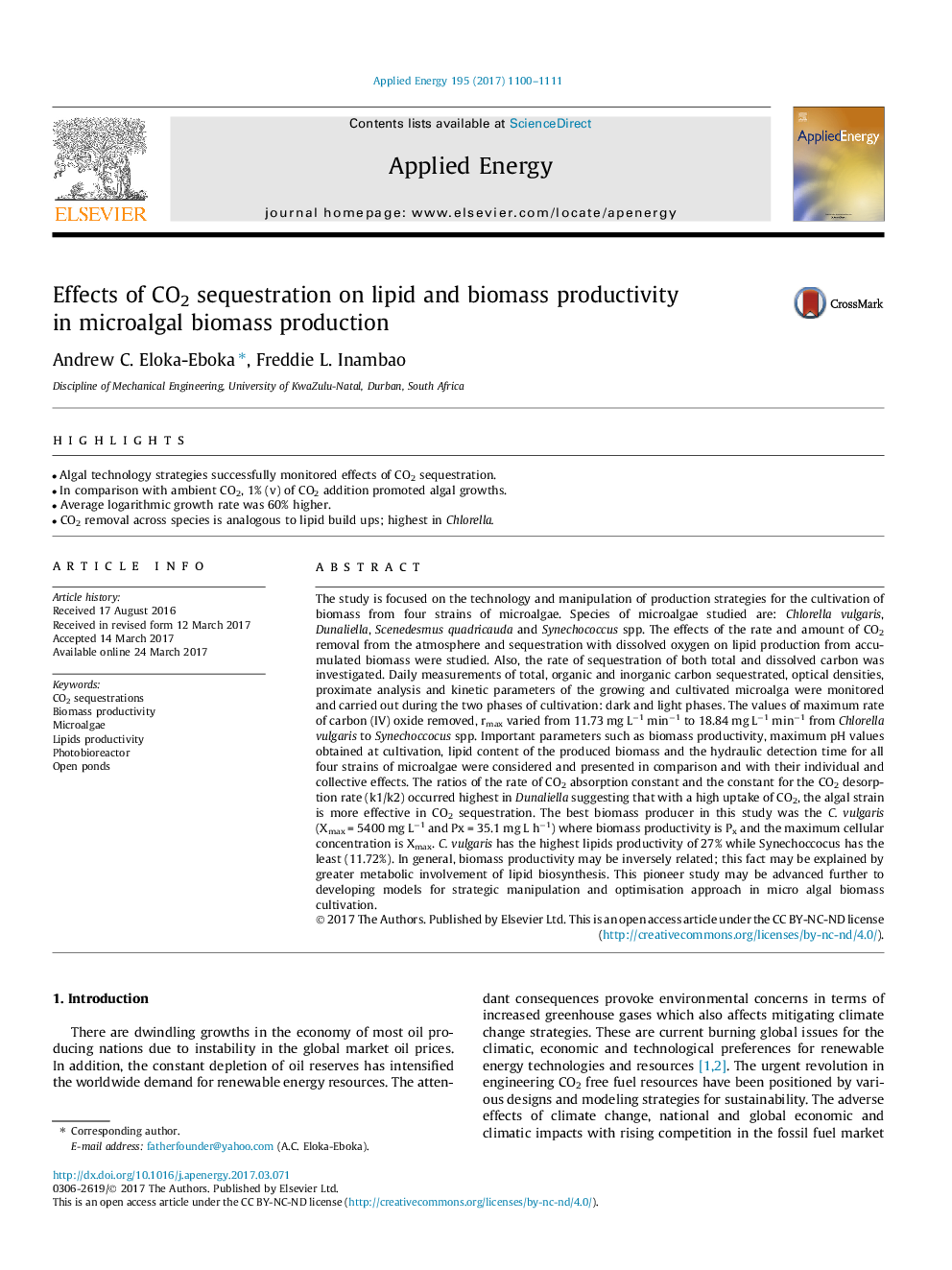| کد مقاله | کد نشریه | سال انتشار | مقاله انگلیسی | نسخه تمام متن |
|---|---|---|---|---|
| 4916545 | 1428095 | 2017 | 12 صفحه PDF | دانلود رایگان |

- Algal technology strategies successfully monitored effects of CO2 sequestration.
- In comparison with ambient CO2, 1% (v) of CO2 addition promoted algal growths.
- Average logarithmic growth rate was 60% higher.
- CO2 removal across species is analogous to lipid build ups; highest in Chlorella.
The study is focused on the technology and manipulation of production strategies for the cultivation of biomass from four strains of microalgae. Species of microalgae studied are: Chlorella vulgaris, Dunaliella, Scenedesmus quadricauda and Synechococcus spp. The effects of the rate and amount of CO2 removal from the atmosphere and sequestration with dissolved oxygen on lipid production from accumulated biomass were studied. Also, the rate of sequestration of both total and dissolved carbon was investigated. Daily measurements of total, organic and inorganic carbon sequestrated, optical densities, proximate analysis and kinetic parameters of the growing and cultivated microalga were monitored and carried out during the two phases of cultivation: dark and light phases. The values of maximum rate of carbon (IV) oxide removed, rmax varied from 11.73 mg Lâ1 minâ1 to 18.84 mg Lâ1 minâ1 from Chlorella vulgaris to Synechoccocus spp. Important parameters such as biomass productivity, maximum pH values obtained at cultivation, lipid content of the produced biomass and the hydraulic detection time for all four strains of microalgae were considered and presented in comparison and with their individual and collective effects. The ratios of the rate of CO2 absorption constant and the constant for the CO2 desorption rate (k1/k2) occurred highest in Dunaliella suggesting that with a high uptake of CO2, the algal strain is more effective in CO2 sequestration. The best biomass producer in this study was the C. vulgaris (Xmax = 5400 mg Lâ1 and Px = 35.1 mg L hâ1) where biomass productivity is Px and the maximum cellular concentration is Xmax. C. vulgaris has the highest lipids productivity of 27% while Synechoccocus has the least (11.72%). In general, biomass productivity may be inversely related; this fact may be explained by greater metabolic involvement of lipid biosynthesis. This pioneer study may be advanced further to developing models for strategic manipulation and optimisation approach in micro algal biomass cultivation.
Journal: Applied Energy - Volume 195, 1 June 2017, Pages 1100-1111